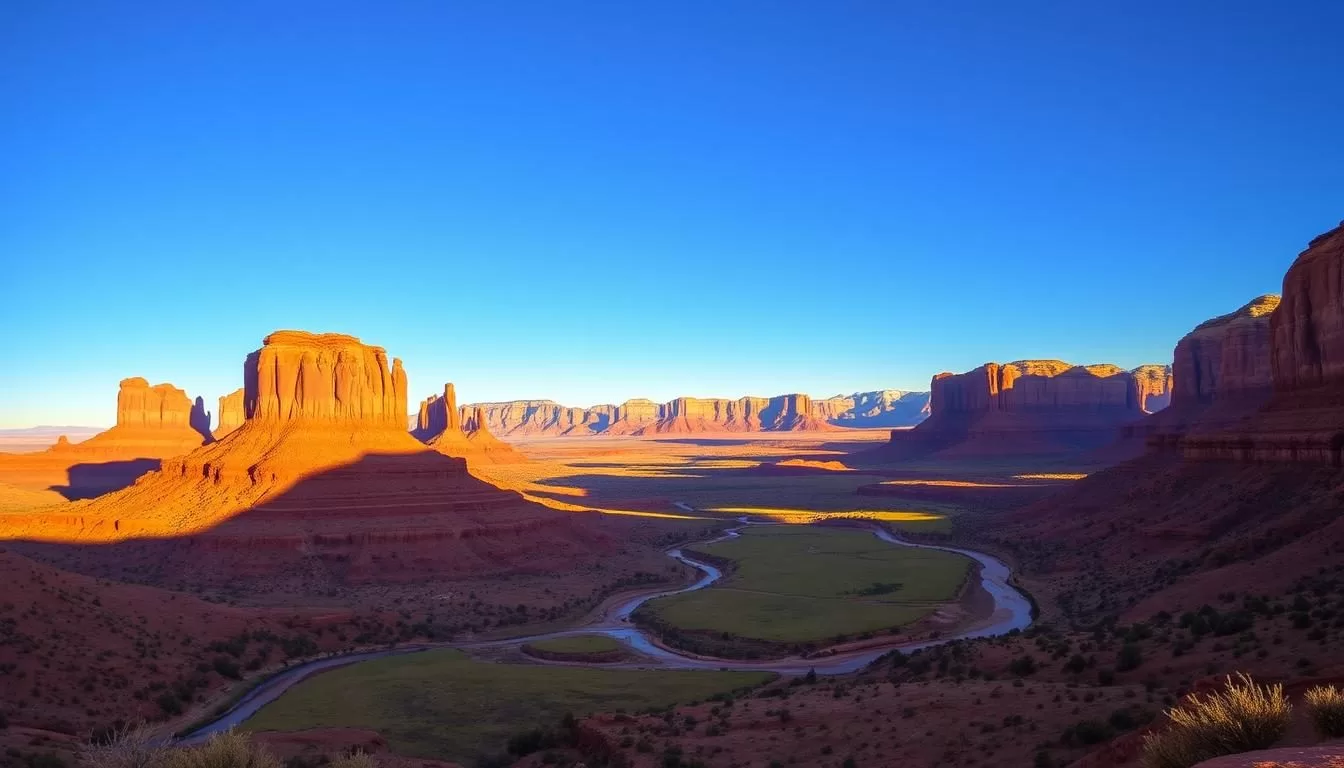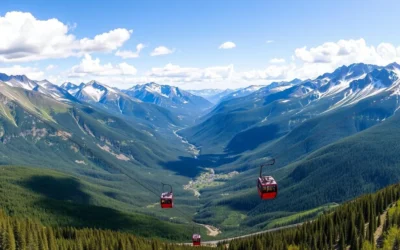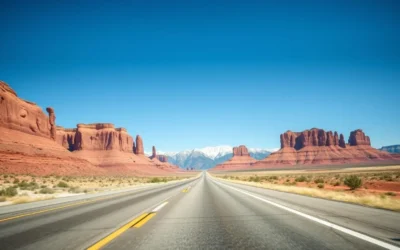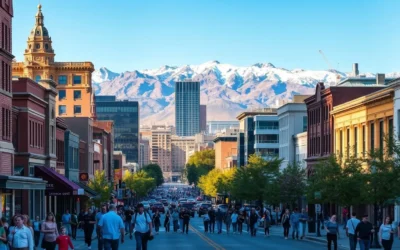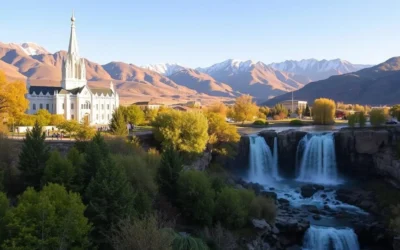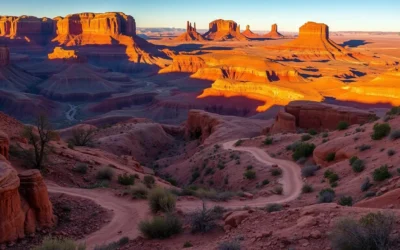Planning a trip to Utah can be a daunting task, given the state’s diverse climate patterns that vary dramatically by season, elevation, and region. The state’s natural beauty, from the Mighty Five national parks to state parks, national monuments, wilderness areas, and national forests, offers comparable views and recreation just beyond the parks’ boundaries.
To make the most of your visit, understanding the weather patterns is crucial. Utah offers distinct experiences throughout the year, from snow-covered mountains in winter to vibrant wildflower displays in spring and stunning fall foliage. The best time to visit depends largely on your preferred activities, whether that’s hiking through national parks or enjoying water sports.
This guide will help you determine the ideal months for your Utah adventure, considering temperature variations and seasonal attractions.
Understanding Utah’s Diverse Climate
Utah’s diverse geography results in a variety of climate conditions across the state. The climate varies dramatically from north to south and east to west, with distinct geographical regions experiencing different weather patterns.
Geographical Variations Across the State
Utah’s climate is influenced by its diverse landscapes, which include deserts, mountains, and plateaus. Northern Utah features higher elevations with cooler temperatures year-round, while Southern Utah encompasses desert landscapes with extreme temperature variations between day and night. The Great Salt Lake also plays a role in moderating temperatures and increasing snowfall in nearby mountains during winter months.
- The state’s diverse landscapes create microclimates throughout Utah.
- Desert regions experience dramatic daily temperature fluctuations.
How Elevation Affects Weather Patterns
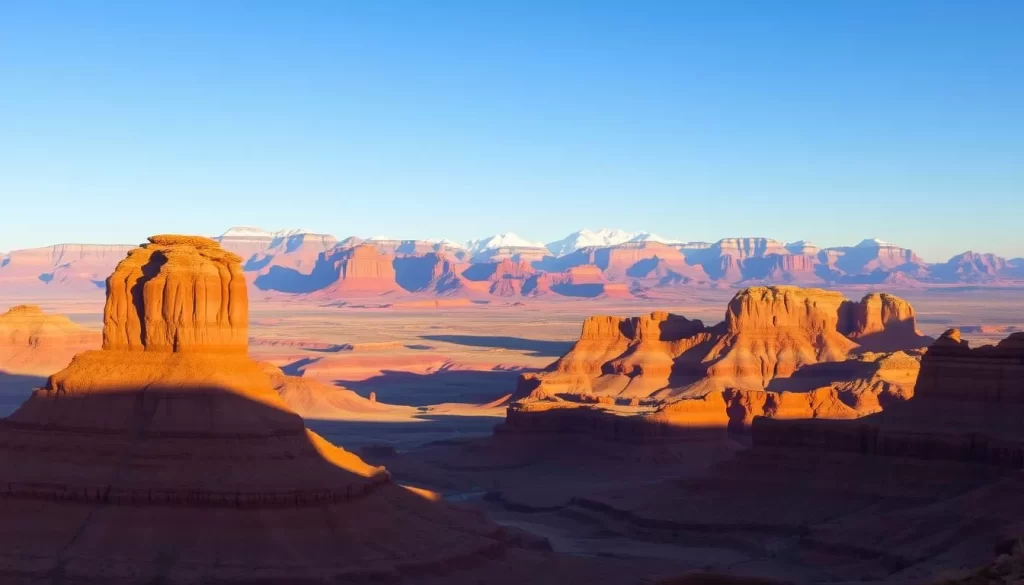 Elevation plays a crucial role in Utah’s weather patterns. Higher areas like Bryce Canyon National Park, with elevations between 8,000-9,000 feet, experience temperatures 15-20°F cooler than lower-elevation parks like Zion, which is at 4,000 feet. Understanding these elevation variations is essential when planning the best time to visit Utah’s national parks and recreational areas.
Elevation plays a crucial role in Utah’s weather patterns. Higher areas like Bryce Canyon National Park, with elevations between 8,000-9,000 feet, experience temperatures 15-20°F cooler than lower-elevation parks like Zion, which is at 4,000 feet. Understanding these elevation variations is essential when planning the best time to visit Utah’s national parks and recreational areas.
Mountain areas can see snow as late as May and as early as October, while desert regions remain accessible year-round with proper preparation.
Spring in Utah: Blooms and Mild Adventures
Spring in Utah is a treat for outdoor enthusiasts, with its unique blend of adventure and natural splendor. During this season, the state’s diverse landscapes transform, offering a wide range of activities and breathtaking scenery.
March to Early April: Navigating the Rainy Season
Early spring in Utah can be quite frigid, with cold rain common in March. However, this period also brings temporary waterfalls in desert canyons, creating a unique experience for visitors.
Mid-April to June: Prime Time for Hiking
As spring progresses, mid-April to June becomes prime time for hiking in Utah. Moderate temperatures (60-75°F) make it ideal for exploring trails throughout the state, enjoying the adventure that comes with experiencing Utah’s natural beauty.
Spring Wildlife and Wildflowers
Spring brings spectacular wildflower displays, with desert blooms appearing as early as April and mountain wildflowers following in May and June. This season also offers excellent wildlife viewing opportunities, with animals becoming more active after winter.
Summer in Utah: Balancing Heat and Recreation
Utah’s summer season brings extreme heat to many parts of the state, but it’s also a great time to enjoy the outdoors with careful planning.
June: Extended Daylight and Moderate Temperatures
June offers a sweet spot with warm but manageable temperatures, making it an excellent time to visit Utah before the peak heat arrives. With up to 15 hours of daylight around the solstice, you can explore national parks like Arches and Canyonlands during the cooler parts of the day.
July-August: Managing the Desert Heat
July and August see temperatures regularly exceeding 100°F in southern Utah’s desert regions. To avoid heat-related illnesses, plan your activities for early morning or late evening. Higher elevation areas like Bryce Canyon National Park offer more comfortable summer temperatures.
Water Sports and Urban Explorations
Summer is prime time for water sports in Utah, with warmer water temperatures making activities like swimming, kayaking, and paddleboarding enjoyable. You can also explore urban areas like Salt Lake City and Park City, which offer air-conditioned museums and cultural attractions to escape the heat. Be prepared for crowds in national parks during peak summer days.
Fall: The Sweet Spot for Utah, United States: Best Months for a Weather-Savvy Trip
As the summer fades, Utah transforms into a vibrant canvas of autumn colors, making fall an ideal time to visit. The state’s national parks, such as Zion National Park and Bryce Canyon, offer breathtaking landscapes during this season.
September-October: Perfect National Park Weather
September and October are particularly pleasant, with daytime temperatures ranging from 65-80°F and cool evenings. This weather is perfect for hiking and exploring Utah’s national parks, including Arches National Park.
Fall Colors and Reduced Crowds
Fall brings a kaleidoscope of colors to Utah’s foliage, especially in the national parks. The contrast of golden aspens against the red rock formations in Bryce Canyon and the cottonwoods along the Virgin River in Zion National Park turning brilliant gold is a sight to behold. Moreover, the crowds dissipate after Labor Day, making it a more peaceful experience for visitors.
Winter Wonderland: December to February
Winter in Utah offers a blend of snowy mountains and accessible national parks. This unique combination makes it an ideal destination for those seeking a mix of outdoor adventures and cultural experiences.
December: Holiday Magic and Early Snow
December brings a touch of holiday magic to Utah’s mountain towns and cities. The festive lights in Salt Lake City and Park City create a charming winter atmosphere, perfect for combining urban and outdoor adventures. Early winter snow typically begins accumulating in Utah’s mountains by late November.
January-February: Prime Skiing Season
January and February constitute the prime skiing season in Utah, with “The Greatest Snow on Earth” reaching its peak quality and depth at world-class resorts like Park City, Snowbird, and Alta. These months offer the best conditions for skiing and snowboarding.
Winter Access to Parks and Monuments
Winter is an excellent time to visit Utah’s southern national parks, such as Zion National Park and Arches National Park, for those seeking solitude. The reduced visitor numbers and the striking new dimension of the red rock landscapes when dusted with snow make for a unique experience. You can enjoy winter hiking opportunities with comfortable daytime temperatures.
Planning Your Weather-Perfect Utah Adventure
Utah’s unique landscapes and diverse recreational opportunities make it essential to plan your visit according to the season. The best time to visit Utah depends on your preferences for weather, crowds, and activities. Whether you’re interested in hiking, skiing, or water sports, Utah has something to offer year-round.
For most travelers, spring and fall are the ideal seasons to visit Utah’s national parks, including Zion National Park, Bryce Canyon, and Arches National Park. These seasons offer comfortable temperatures and manageable crowd levels. In contrast, summer requires strategic planning to avoid the heat, while winter provides a serene and crowd-free experience in southern Utah’s national parks.
By considering the specific months that align with your preferred activities and tolerance for temperature extremes, you can have a weather-perfect Utah adventure. Whether you’re looking for snow sports at world-class resorts or water-based activities like whitewater rafting and paddleboarding, Utah’s diverse landscapes and elevations ensure a unique experience.
The above is subject to change.
Check back often to TRAVEL.COM for the latest travel tips and deals.
Here are some Tours & Sightseeing suggestions that might pique your interests!
